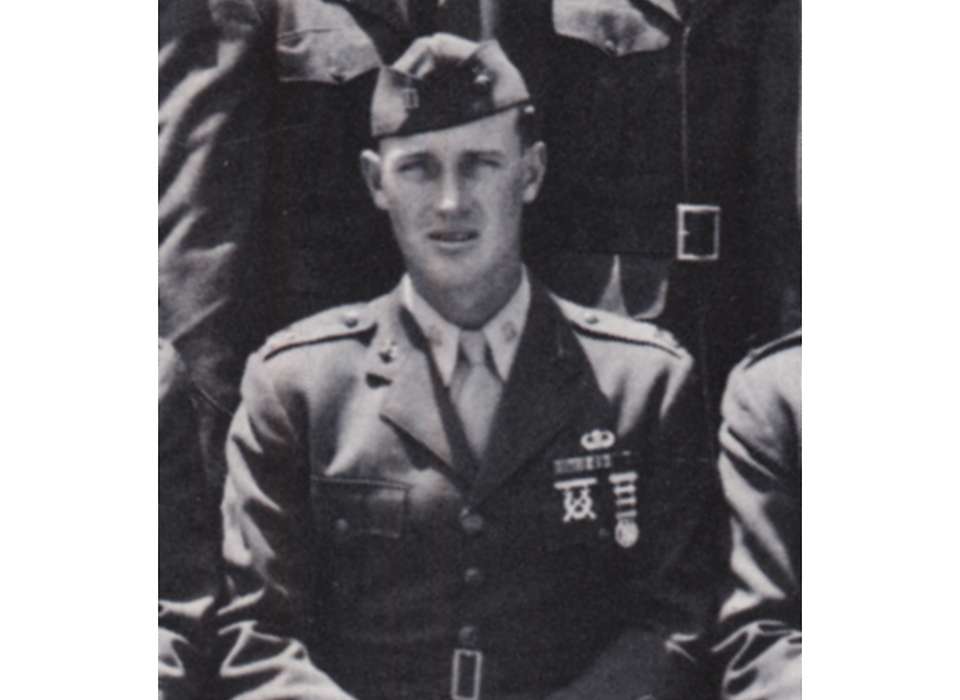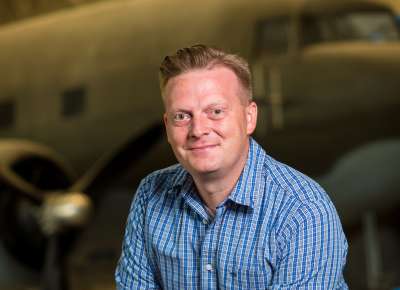Dave Severance was born in Milwaukee, Wisconsin in 1919 and as a baby moved to Greely, Colorado. He grew up there, went to college in Seattle, ran out of money for school, and was forced to get a job. Instead of joining the working force, Dave joined the Marines with the intention of becoming a pilot. After completion of boot camp, Dave went to sea with the Fleet Marine Force as a corporal and was eventually stationed in San Diego with the 8th Marines. In July 1941, Dave trained as a Paramarine, in rigorous training that he described as fun.
After the war started, Dave had attained the rank of sergeant and was sent to become an officer in the rapidly expanding Marine Corps. Dave was a platoon commander when he was sent overseas in 1943 and saw his first action on Bougainville. His platoon was cut off and ambushed by Japanese troops about a mile behind enemy lines. While fighting their way out of the encirclement, they wiped out the enemy against the loss of one Marine. In February 1944, Dave went back to the United States and was put into the 5th Marine Division after his Paramarines had been disbanded.
Once in the division, Dave was assigned to take over as Company Commander, Easy Company of the 28th Marines. It was this company that would be responsible for raising the flag on Mount Suribachi during the campaign for Iwo Jima. After months of training, the 5th Marines and Dave landed on Iwo Jima. Based on his briefing, Dave knew that the capture of Mount Suribachi was his 28th Marines’ responsibility. His unit suffered greatly in both the landings and the subsequent capture of the mountain in the following days. Dave Severance came ashore in command of Co. E, 2nd Bn, 28th Regiment. His was one of 62 companies that landed on those beaches that morning. Under him, he had six officers and 240 enlisted men.
At the end of the Battle of Iwo Jima, none of those officers were with him. Most had died, the others had been wounded and evacuated. His Navy Corpsmen suffered the greatest losses. He arrived on shore with seven Corpsmen, all of whom were killed. They were replaced by seven more, all of whom were killed or wounded and evacuated off of the island. He asked for more, but all that command could send him were two ambulance drivers. Both of them were killed.
On February 28, Severance was asked to supply a platoon of men to plant a flag on top of the 455-foot high volcano, Mount Suribachi. One of those men was a Navy Corpsman. The platoon went to the summit, encountered no resistance, and planted the flag. The Secretary of the Navy, James Forrestal, had landed on the beach below, and seeing the flag said he wanted it as a memento. The platoon returned to the summit with a replacement flag, and that is when the famous Pulitzer Prize-winning picture by Joe Rosenthal was taken.
"Just as they started to raise the second flag, Joe Rosenthal said he turned his head and out of the corner of his eye saw the flag start up. So he swung around with his camera, snapped one shot."
Dave Severance on what would become the iconic picture of World War II
Dave survived Iwo Jima and immediately was assigned the responsibility of training a new company for the invasion of Japan while in Hawaii. When the war ended, he was transferred as the operations officer for his battalion and sailed for Japan as battalion executive officer in 1946. Eventually Dave got his chance to fly when he went to flight training in April 1946. He retired in May 1968, after 30 years of service with the rank of Colonel.
Seth Paridon
Seth Paridon was a staff historian at The National WWII Museum from 2005 to 2020. He began his career conducting oral histories and research for HBO’s miniseries The Pacific and holds the distinction of being the first historian hired by the Museum’s Research Department. In the 12 years he was Manager of Research Services, Seth and his team increased the oral history collection from 25 to nearly 5,000 oral histories.
Cite this article:
MLA Citation:
APA Citation:
Chicago Style Citation:









